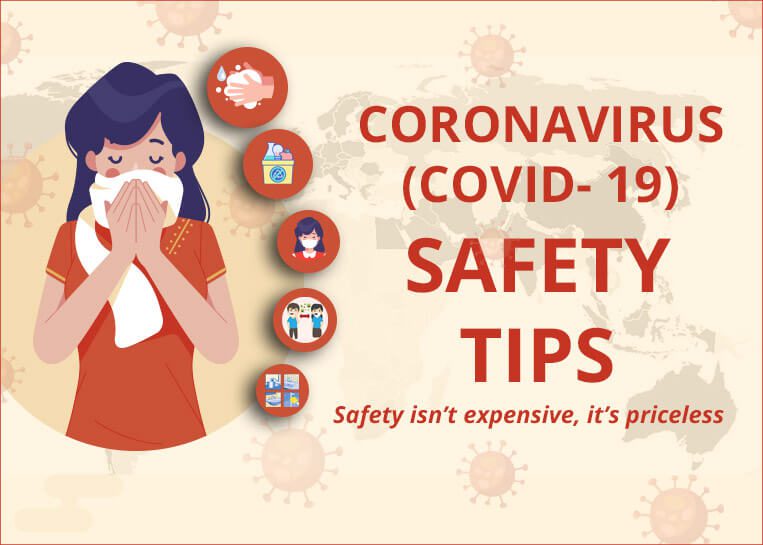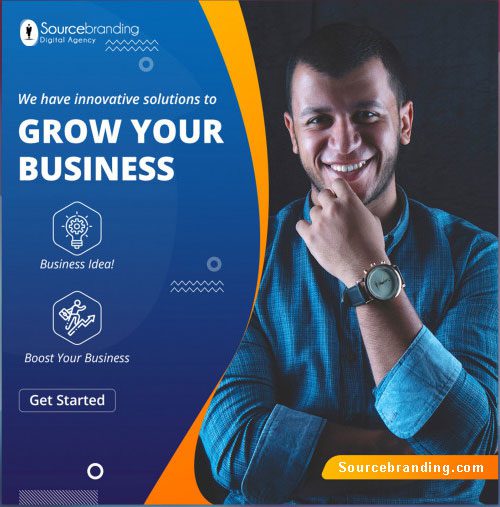
DIY SEO: Step and Tactic That Anyone Can Follow
So you want to drive more online visitors to your website or increase your rankings in Google’s search engine, but don’t know where to start.
Should you hire an SEO company or go at it yourself? When it come to search engine optimization it can be an overwhelming process, but it doesn’t have to be.
An SEO expert or agency can help ensure that when consumers do a web search, your website is one of the first resources to appear in the search results. But prior to paying someone else to help facilitate improved web results, you may want to enlist a few DIY tips yourself to give your SEO a boost.
Here are 16 do-it-yourself SEO tips that small business owners should try before hiring an SEO firm:
1. Start with Personas
Driving more visitors to your site starts with knowing the persona of your ideal buyer and understanding what makes them tick. Why? Because websites are ultimately built for humans and not robots. So dig into their challenges, understand why they buy, and create a customer persona. This will help you to best align your SEO and website strategy so you can get found online by your ideal customer.
2. Plan Your Keyword Research
Before you push up a bunch of content and copy on your website, make sure you plan out your keyword strategy. Keywords are the words or phrases that your target audience searches for when looking for products and services or when trying to solve a problem in search engines like Google and Bing. Search engines, like Google, will match up the most relevant content to the search of their user and provide the most accurate results from websites, blogs and images.
There are a number of tools that give you valuable insights into which keywords you should focus on such as Wordstream, Ubersuggest and Google’s Keyword Planner. If you need a little assistance with your keyword research, here is a great article from Jason Demers at AudienceBloom that breaks it down step by step.
3. Find Gold in the Long Tail
For a lot of industries, ranking for the most trafficked keywords is highly effective. At the same time, trying to rank for those highly competitive terms can be a long and costly endeavor. Instead of focusing solely on the most popular keywords, spend some time building out a targeted strategy around relevant long tail keywords.
Long tail keywords are longer and more specific phrases that search engine users search on when they are closer to making a purchase or finding what they are looking for. Longtail keywords are a key to a healthy, online growth strategy.
So if you own an accounting software company, instead of trying to rank for an uber competitive keyword such as “accounting software” with about 52 million searches and national brands vying for the top spot, try a targeted and more relevant approach such as “accounting software for real estate agents.”
4. Study your Competitors
Once you have your keyword strategy in place, identify the top competitors for each keyword and what they are doing right to get ranked in the good graces of the search engine gods. SpyFu is a simple cost effective tool to gain better insights into your competitors paid and organic search initiatives. Keep in mind that while competitive info can help shape your SEO initiatives, be careful not to rely solely on your competitors. After all, your best website conversions will come from those visitors that are best aligned to YOUR ideal buyer.
5. Blog Consistently
Pages on your website don’t change every day. So with Google always looking for new content, blogging is a great way to push up fresh, relevant content for the search engines to index. Remember as you blog, write your content for your ideal buyer and the challenges they face everyday. Don’t just load your blog posts with keywords. Again, you’re ultimately trying to connect with people – not search engine robots. Avoid keyword stuffing, but do select a primary keyword for your post paired with research from Google Trends to give yourself the best chance of your content being discovered. Make sure the keyword appears in the title, body copy, url and meta description for the best optimization of your post.
Another blogging tip is to use guest blogging in your strategy. Identify influencers and leaders in your space who write quality content and partner with them to create content that links back to your site. This is a great way to boost traffic, shares, and brand equity online.
6. Eliminate Duplicate Content
One of the easiest ways to drop in the rankings and get punished by the search engines is to copy content and use it on your site. When Google is presented with same piece of content in multiple places, it will show only one page and crowd the others out of the search rankings.
The goal of Google and search engines is to push original and relevant content to the top when users search on the terms they are looking for and suppress duplicate content and non valuable pages. So if you want to add content from another site, a simple best practice is to link to it and reference the original source or utilize 301 redirects from any duplicate pages to the original pages.
7. Distribute and Share
As your content engine is humming look for ways to push out your white papers, guides, blog posts and resources out through multiple distribution channels. Content distribution platform Outbrain breaks it down in the following ways:
Earned Content Distribution: This is when third-parties share or publish your content through social media, guest posts, media coverage or product reviews.
Owned Content Distribution: This includes publishing content to web properties that belong to you, like your blog, email newsletter, or social media profiles.
Paid Content Distribution: As the name implies, this is through paid channels, often using a pay-per-click advertising model.
8.Use Internal Links
With today’s heightened focus on content, internal linking is a great strategy to boost SEO. An internal link connects one page of a website to a different page on the same website. By using internal links in your site pages and in blog posts it improves readability for your visitors, rankings for keywords, and Google’s ability to crawl your site. When you link internally try to go deep. In other words don’t just link back to your home page but to pages that are rich in content and relevant to the topic at hand.
9. Grow your Inbound Links
In addition to your internal linking strategy, external link building remains one of the cornerstones of SEO and best ways to improve your ranking in search land. The goal of inbound linking is to get outside links from sites, directories, and forums that have a solid domain authority and link them back to your site. For example, if your business gets mentioned in the Huffington Post, which has a higher PageRank than your website, it will boost your PageRank and Google and other search engines will reward you by increasing your position in search results.
10. Use SEO Friendly URLs
Making sure your URLs are clean and optimized is an important DIY tip if you want to rank highly on SERPs (search engine results pages). URLs are simply the address of a unique page on your website that directs online users to your site. When building URLs for your website, it’s important to make sure they are friendly, easy to read for online visitors and include relevant words (keywords) that correlate to the copy on the page of the website.
Let’s say someone is looking for red men’s socks so they search Google. By creating a descriptive, friendly URL you can increase the chances you will show up in the top search results in Google and improve your conversion chances with an easy to digest relevant URL.
And…
There are two main takeaways from this example. One the descriptive and concise URL structure that Nordstrom has created has helped it to outrank the Saks Fifth Avenue ad. Second, as a user when I click through to the two pages from the search term mens red socks, the Nordstrom page shows me red socks while the Saks Fifth Avenue page just gives me men’s socks. Actually, there are no red socks on the page. Remember, Google is rewarding relevancy more and more. So, matching URLs and content together both improves your SEO and gives your conversion rates a boost.
Bonus Tips:
Try to keep URLs short making them easy to type and read. Also, eliminate unnecessary words such as and, the, and symbols such as @. If you need to separate words in your URL use hyphens instead of underscores as Google has a hard time recognizing them and won’t index your page.
11. Feed the Need for Speed
Believe it or not, how fast your site and your pages load are critical to how Google ranks your site for SEO. Not only does it impact your search rankings, but it affects the experience your users have when they engage with your website. In a world of online options, visitors won’t stick around for pages, images and videos to load. In fact, pages with longer load times tend to have higher bounce rates and lower conversion rates. Here is a great post from Moz to help you optimize your page speed.
12. Optimize for Mobile
More and more people are using their mobile devices to search online which means it can be a major source of traffic and conversions for your business. In fact studies show 70% of mobile searches lead to online action within just one hour. Recently Google launched their mobile-friendly update designed to give a nod to pages that are mobile optimized. This is a quest by the mother of all search engines to provide the best possible experience for its users when looking for products and services. If you want to find out if your pages are mobile-friendly you can simply utilize Google’s tool that checks your url for mobile-friendliness.
13. Use Landing Pages
A landing page is a stand-alone page on your website where visitors land from sources such as search engines, PPC, social and email marketing. It is a great tool to drive focused traffic to your site and optimize conversions from search. Most landing pages typically use a form to capture and convert visitors. When creating landing pages in WordPress or one of the landing page tools such as Instapage, don’t forget to optimize for SEO with your keywords and use relevant content with a specific call to action (CTA).
14. Don’t Forget the User
Most websites are still built for the way Google used to rank. They’re often overloaded with keyword jargon and not optimized for humans. But current day search engines have put algorithms in place to measure a website’s user experience and reward sites that put UX (User Experience) into practice. Elements like clean site navigation and sitemaps help users to discover content more easily and help your website to be indexed effectively, making sure search engine bots can more easily crawl your site.
It’s the quality of traffic and not always the quantity of traffic that is going to grow your customer base. When you build your website around the user and focus on adding value for the user, visitors will stay on your site longer, digest more content, subscribe to your lists and connect with you to learn more. Bounce rates will decline and conversions will climb.
15. Keep up with SEO Trends
Search engine optimization is an ever-changing landscape. Staying at the top of search rankings consistently takes keeping up to date with trends, news, and new concepts. Sign up for SEO blog newsletters and check out sites such as Moz, Search Engine Watch, Search Engine Land and industry-leading SEO sites. Other helpful resources are Moz’s Whiteboard Friday and the Google Webmasters YouTube channel.
16. Use Analytics
As you make changes to improve SEO, you need insight into what’s working and what isn’t. Google Analytics is a free tool to help you to monitor your traffic, see which sources most of your traffic is coming from, learn which landing pages are converting the most traffic into prospects for your business, and measure the overall conversion rate of your website.
In addition to website analytics, you want to make sure that the traffic your driving eventually converts into new customers for your business. Tracking the lead source of each prospect in your CRM can tell you which sources your customers are coming from, and measure how many folks become customers by finding your website online.
17 Reach out to An SEO Agency
The DIY tips provided here are designed to give you a solid foundation to help you build an effective SEO strategy and get found online. However, depending on the competitiveness of your industry and the resources of your business you may want to reach out to an SEO firm or consultant to help you along the path. When looking for the right SEO firm ask lots of questions, understanding their linking strategy, what analytics they will provide you with, and don’t forget to speak in-depth to relevant references
18. Build Your Social Media Network
Join Twitter and one or two other social media platforms. You have many options — Facebook, LinkedIn, Instagram, Pinterest, many more. Social media enables you to connect with your customers and prospects and offers an audience for your content.
Understanding and nurturing these relationships boosts your SEO in the long run. Increasing the exposure of your content also increases the likelihood that some of those viewers will blog about it or link to it.
19. Understand Google Analytics
You can’t optimize what you don’t measure. The importance of analytics in digital marketing is akin to financial reports in business. Both are essential to track performance.
Have a basic understanding of Google Analytics (or whatever web analytics package your business uses). In Google Analytics, study the reports under Acquisition > All Traffic > Channels. By clicking on “Organic Search,” you’ll be able to analyze performance for your SEO program.
20. Produce Regular Content
You don’t have to start a blog or turn your business into a publishing company by posting content every day. It’s unrealistic for many ecommerce sites. But publish your own content regularly. Schedule weekly or at least monthly updates. Consistency is key.
Content does not need to be text. For example, an architectural firm could publish photographs of its projects with short textual descriptions. Realtors could publish weekly video bulletins with transcripts. Publishing content that is tailored to the consumption habits of your target audience is the goal.
21. Make sure your content is simple and easy to read
If your copy is difficult to read or understand, users will hit the back button faster than you can say “wait!”
Don’t just think about SEO. Be it a landing page, product page or a blog post, the copy on these pages is supposed to persuade. If it’s convoluted and complex, not only is it bad for SEO, it’s going to be bad for business.
How do you convince someone to join your email list or buy your product if your copy can’t even be understood?
Keep your copy nice and simple. Use these tips:
- Avoid big words. Don’t say erroneous when you could say wrong. Always use simple language.
- Use formatting like bolding, italics and lists to break up chunks of copy.
- Include multimedia, like images, videos, and GIFs to illustrate your points and break up walls of text.
- Use tools like Hemingway to simplify your content.
22. Create irresistible title tags and meta descriptions
Getting to page 1 is only half the battle won. The other half is convincing the searcher to click on your page over the other results. How can you do this?
Write title tags and descriptions that compel the searcher to click.
More clicks = more traffic! (And more traffic usually means more sales.)
Plus, there is evidence that a higher click-through-rate (CTR) can have a positive effect on rankings.
Here are a few tips for writing compelling meta titles and descriptions:
- Keep them short: Google starts truncating both title tags and meta descriptions after a certain length. Use this SERP simulator to check that you’re within the boundaries.
- Use “power” words: Awesome. Powerful. Proven. Etc. These are all words that evoke an emotional response from readers. See more power words here.
- Include your target keyword: Not an absolute requirement. Sometimes it doesn’t make sense to do this. In general, however, this is another good way to show the user that your page is the most relevant result for their search.
23. Use descriptive URLs
A descriptive URL tells you what to expect from a web page.
Here’s an example: https://sourcebranding.com/blog/diy-seo/
It doesn’t take a genius to work out that this page is about local SEO—it’s immediately apparent from the URL alone. This makes the result more clickable. That’s because users are almost certainly more likely to click on a result that demonstrates what they should expect from the page in no uncertain terms.
There’s one other reason why it makes logical sense to do this: backlinks that use the naked URL as the anchor text will include your target keyword.
24. Ask Questions
If you are stuck or need answers, jump into SEO communities to ask questions or simply contact us with your inquiry.













